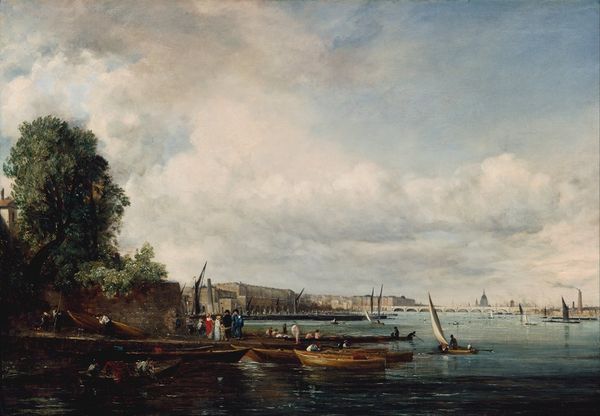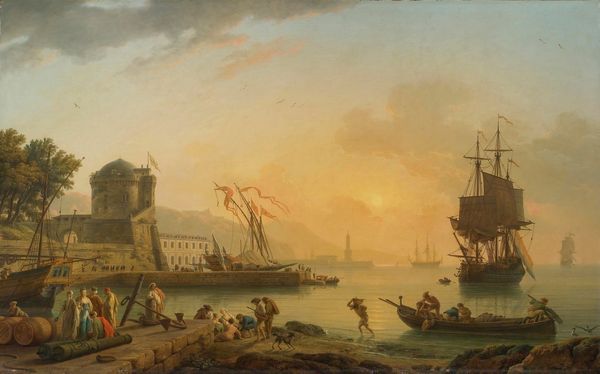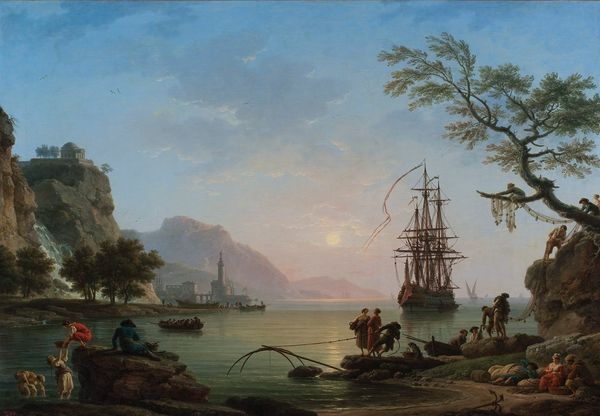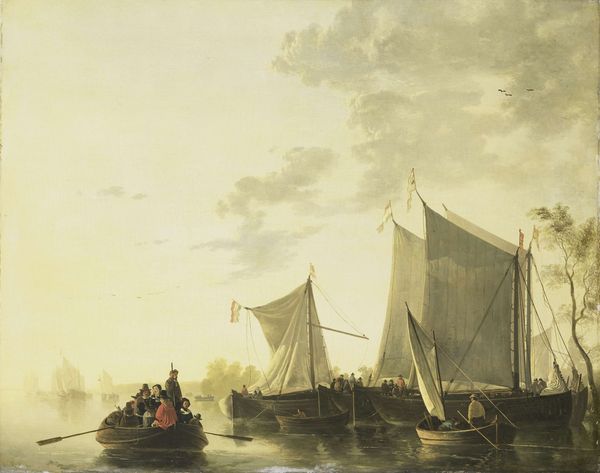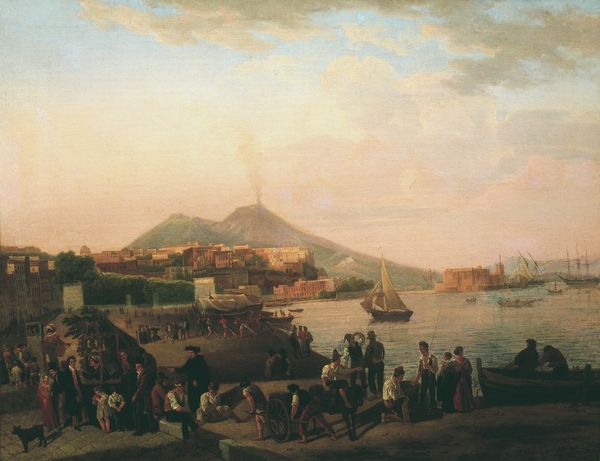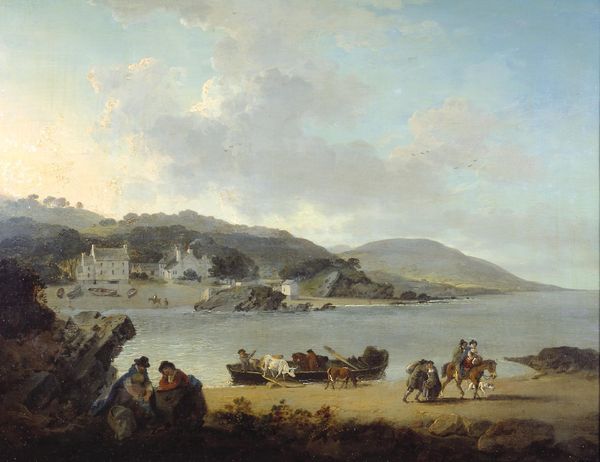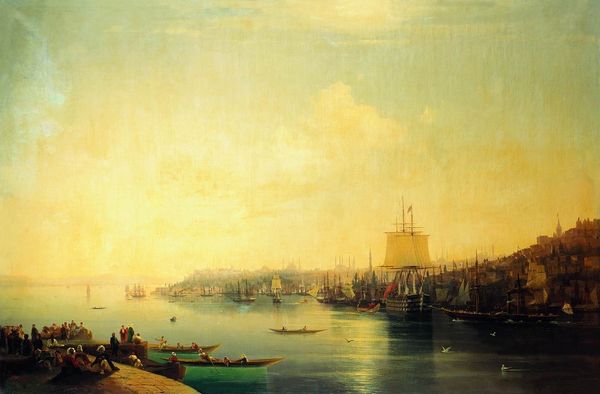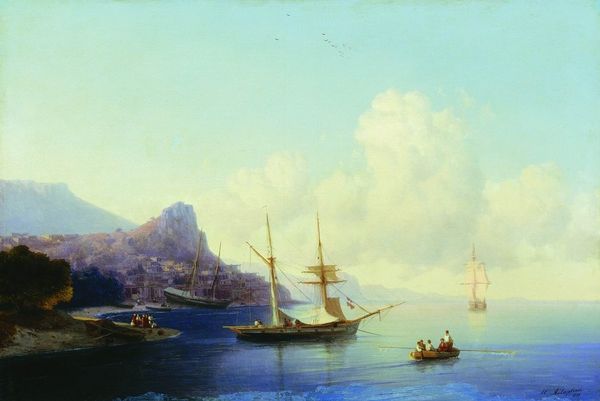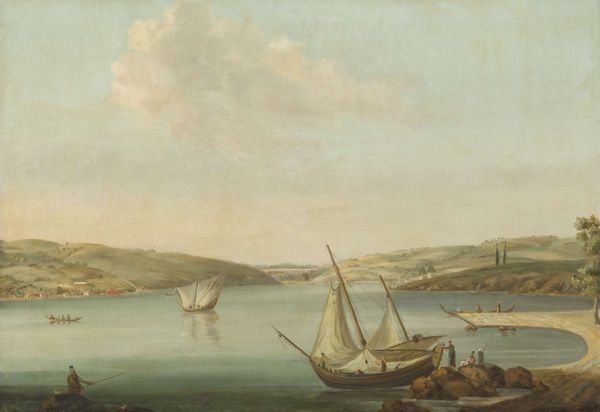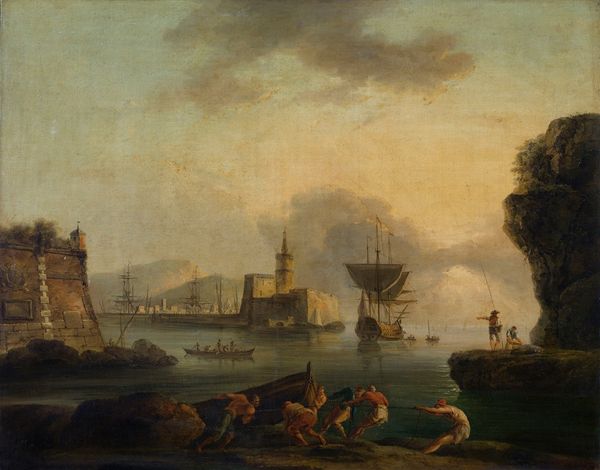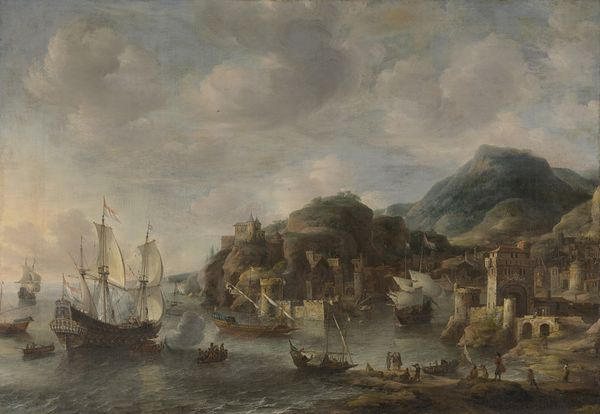
View of a Mediterranean port with a group of figures on the shore’s edge, a large ship beyond
0:00
0:00
oil-paint
#
baroque
#
oil-paint
#
landscape
#
oil painting
#
romanticism
#
cityscape
#
history-painting
Copyright: Public Domain: Artvee
Curator: Claude-Joseph Vernet, known for his idealized landscapes and maritime scenes, may well be the creator of this piece, referred to as "View of a Mediterranean port with a group of figures on the shore’s edge, a large ship beyond," which appears to be an oil painting. Editor: The immediate impression is one of controlled grandeur. The golden light lends a sense of idealized beauty to this busy port scene. What intrigues me most is the subtle choreography between the figures. Curator: Indeed, look at the careful construction: The layering of space from the foreground figures to the ship in the distance gives the illusion of depth, it guides our eyes across the canvas. I wonder about the types of pigments used, how did he create that sense of luminous atmosphere? Editor: My focus keeps drifting back to the figures. The individuals assembled on the quay remind me of theatrical actors pausing before entering the stage. Are we, perhaps, invited to decode their roles and motives? Do you notice the contrast between the fishermen relaxing, and the wealthy elegantly stepping into their transport? It speaks to social stratification. Curator: I agree about the staging effect. And notice the prominent architecture, that ancient tower is built out of locally quarried materials surely, how that tower interacts with the harbor, the way architecture frames commercial trade. The choice to feature specific structures underscores the human modification of landscape. Editor: And then there's the ship – a powerful symbol, the embodiment of both commerce and empire. And consider the lighthouse; its presence alludes to knowledge, navigation and safe passage, and how humans attempted to control nature. These icons represent an established society proud of itself. Curator: I’m struck by how the artist marries realism with idealization. There’s an interesting dialogue happening between depicting a real harbor, versus an constructed landscape designed to communicate an attitude about place, materials and human intervention. Editor: Examining this piece from my perspective, I am left considering not just the aesthetic impact, but also the enduring power of symbols in shaping our cultural memory and our perception of what could be termed a "golden age."
Comments
No comments
Be the first to comment and join the conversation on the ultimate creative platform.

